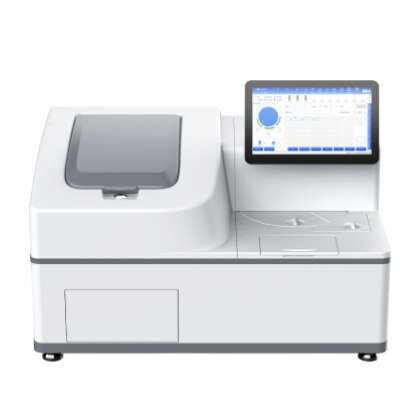Novel Biocompatible Patch Repairs Heart Damage in Rat Model
By Gerald M. Slutzky, PhD
Posted on 13 Dec 2016
A team of Australian and British bioengineers has developed an electrically active biocompatible insert that can repair damage to electro-responsive tissues, such as the brain, heart, and nervous system without need of sutures.Posted on 13 Dec 2016
Conducting polymers (CPs) are being considered as components of this type of biocompatible insert because of their intrinsic electroactive and flexible nature. However, their clinical application has been largely hampered by their short operational time due to a decrease in their electronic properties.

Image: A flexible polymer patch, which improves the conduction of electrical impulses across damaged heart tissue in animals, can be attached to the heart without the need for stitches (Photo courtesy of the University of New South Wales).
To circumvent this problem investigators at the University of New South Wales (Sydney, Australia) and Imperial College London (United Kingdom) developed a novel CP scaffolding by growing polyaniline (PANI) doped with phytic acid on the surface of a chitosan film. Chitosan is a polysaccharide found in crab shells that is often used as a food additive; polyaniline is a conducting polymer; and phytic acid is a substance found in plants that is added to the polyaniline to switch it to its conducting state.
The investigators reported in the November 30, 2016, online edition of the journal Science Advances that the strong chelation between phytic acid and chitosan led to a conductive patch with retained electroactivity, low surface resistivity, and oxidized form after two weeks of incubation in physiological medium.
Ex vivo experiments revealed that the conductive nature of the patch had an immediate effect on the electrophysiology of the heart, while preliminary in vivo experiments in a rat model showed that the conductive patch did not induce proarrhythmogenic activities in the heart while it improved the conduction of electrical impulses across heart scar tissue.
"Our suture-less patch represents a big advance," said first author Dr. Damia Mawad, lecturer in materials science and engineering at the University of New South Wales. "We have shown it is stable and retains it conductivity in physiological conditions for more than two weeks, compared with the usual one day of other designs. No stitches are required to attach it, so it is minimally invasive and less damaging to the heart, and it moves more closely with the heart's motion. We envisage heart attack patients eventually having patches attached as a bridge between the healthy and the scar tissue, to help prevent cardiac arrhythmia. However, our patch is at the very early stages of this research. This technology can now be used for basic research to gain insights into the interface between the material and tissue."
Related Links:
University of New South Wales
Imperial College London













